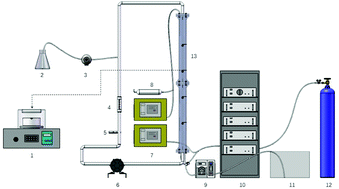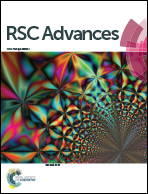Employing a novel O3/H2O2 + BiPO4/UV synergy technique to deal with thiourea-containing photovoltaic wastewater†
Abstract
Photovoltaic wastewater contains a large amount of thiourea that cannot be directly treated by biological methods because of its biotoxicity. In this study, a novel O3/H2O2 + BiPO4/UV synergy technique was used as a pre-treatment process to degrade thiourea. The effects of H2O2 and catalyst loading were investigated, and the transformation pathway of thiourea was predicted based on the intermediates detected by UPLC-Vion-IMS-QToF. The synergy technique degraded 89.14% thiourea within only 30 min, and complete degradation occurred after 150 min. The TOC removal of O3/H2O2 + BiPO4/UV was 1.8, 1.5, and 1.9 times that of O3/H2O2 and BiPO4/UV/H2O2 single processes and O3/H2O2 + UV process, respectively, which was due to the synergy between H2O2 residues and BiPO4. In addition, thiourea was mainly degraded by ·OH into thiourea dioxide and melamine (polymerized by other intermediates) and then further degraded into biuret and methyl carbamate by the holes of BiPO4, followed by complete mineralization into H2O and CO2. These results confirm that the O3/H2O2 + BiPO4/UV synergy technique is a promising option for the degradation of thiourea.



 Please wait while we load your content...
Please wait while we load your content...